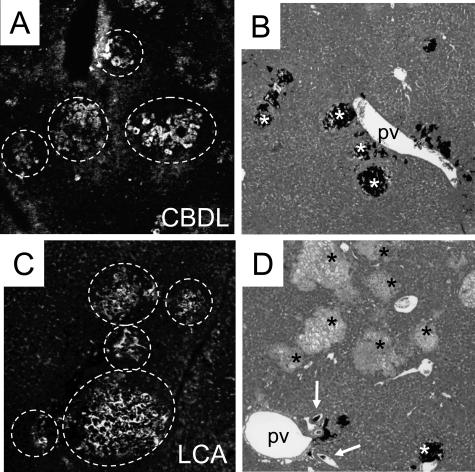Figure 10.
Bile infarcts in LCA-fed mouse liver fill-up with fluorescent UDCA injected into the inferior vena cava, but partial obstruction of the biliary tree prevents retrograde filling of bile infarcts with India ink. Fluorescent UDCA injected into the inferior vena cava (A and C) and India ink injected into the common bile duct (B and D) in livers from CBDL mice (A and B) and 4-day LCA-fed mice (C and D). A and C: Bile infarcts in CBDL and LCA-fed mouse livers are impregnated by fluorescent UDCA, suggesting that fluorescent UDCA is secreted into bile canaliculi and regurgitates into bile infarcts (surrounded by the white circles) due to outflow obstruction in both models. B: India ink injected into the common bile duct after CBDL fills most bile infarcts (white asterisks). D: India ink injected into the common bile duct enters interlobular bile ducts (arrows) in LCA-fed mouse. India ink stains only the minority of bile infarcts (white asterisk), whereas most remain negative for India ink (black asterisks), suggesting that partially biliary obstruction prevents complete retrograde filling of bile infarcts with India ink in LCA-fed mice. Original magnification, ×10.

